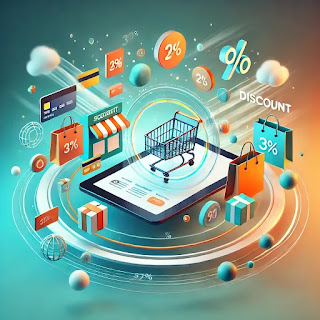SUMMARY
- Global presence: Operates in over 120 countries with a robust network of subsidiaries; specializes in diabetes, oncology and neuroscience therapies.
- 2023 revenue: $34.1 billion (+19.5% YoY); major contributors include Trulicity ($7.13 billion) and Mounjaro ($5.16 billion).
- Key products: Trulicity, Mounjaro, Verzenio and Taltz dominating diabetes, oncology and immunology segments.
- Key subsidiaries: Elanco Animal Health (divested in 2019), ImClone Systems, Loxo Oncology and Dermira.
- Market leadership: Commands 60% of the global diabetes market along with Novo Nordisk; it continues to lead in oncology and immunology.
From Chemist's Dream to $35 Billion
By 2025, the US pharmaceutical market is expected to maintain its strong growth with an estimated value of about $740 billion. The U.S. pharmaceutical market may increase even more by 2030, reaching more than $900 billion, depending on advanced therapeutics and healthcare trends. Prescription drugs will continue to dominate the market, and in 2023 more than 80% of all revenue come from this sector. Treatment for cancer will continue being the most valuable segment commanding the market, approximately at 16.8% of the market size for the year 2023. Eli Lilly is in a strong position due to the large contributions from its diabetes and obesity drugs, which are part of a fast-growing segment with a size greater than $100 billion. Diabetes drugs constitute a segment in which Eli Lilly and Novo Nordisk together command approximately 60% of the market. Eli Lilly had recorded revenue of $34.1 billion in 2023, with a notable share from its products:
- Mounjaro (Medicine for adults with type 2 diabetes): $5.16 billion
- Trulicity (Type 2 diabetes medication): $7.13 billion
- Verzenio (Medicine for HR+, HER2– breast cancer): $3.86 billion
In 2023, the America's pharmaceutical market had marked a tremendous level of import and export activities. The country was the world's largest importer of pharmaceuticals importing nearly $177.85 billion or about 21.47% of the total pharmaceutical imports around the world. Ireland had gained prominence as the primary import source to the America accounting for around $36 billion followed by $25.6 billion being imported from Germany. The top five countries - US, Switzerland, Germany, Belgium and mainland China account for 43.9% of global pharmaceutical imports in 2023.
How It All Began
Eli Lilly and Company was born by a brilliant chemist and businessman, Eli Lilly in 1876 with a dream to produce the finest medicines, always with honesty and fairness. Years of experience in the pharmaceutical world marked the first big success: In 1879, a cough syrup was developed. With deep knowledge of chemistry, Lilly brought a reliable consistent product to market at a time when medicines were often hit or miss.
The products must have initially reached local pharmacies and doctors in Indianapolis. However, the company's commitment to purity and quality helped Lilly gain the trust of medical professionals quickly. By 1880, they were already getting big orders from regional pharmacies and entering national markets.
Over the next decades, Lilly continued to create new medicines, such as insulin that altered the way that people with diabetes lived their lives, as well as different antibiotics. Such innovation propelled this company to become a world leader in the pharmaceutical business. Today, Eli Lilly and Company has a tremendous web of subsidiaries and affiliates all across the globe.
The products must have initially reached local pharmacies and doctors in Indianapolis. However, the company's commitment to purity and quality helped Lilly gain the trust of medical professionals quickly. By 1880, they were already getting big orders from regional pharmacies and entering national markets.
Over the next decades, Lilly continued to create new medicines, such as insulin that altered the way that people with diabetes lived their lives, as well as different antibiotics. Such innovation propelled this company to become a world leader in the pharmaceutical business. Today, Eli Lilly and Company has a tremendous web of subsidiaries and affiliates all across the globe.
Eli Lilly is a major player in the diabetes and oncology markets, with products like Trulicity, Jardiance and Mounjaro holding significant market shares. However, the pharmaceutical market is incredibly competitive. Big names like Johnson & Johnson, Pfizer, Novartis, Merck, AbbVie and AstraZeneca are major players, especially Johnson & Johnson and Pfizer, who have dominated revenue in the past five years.
Presently, Eli Lilly holds some 15-20% share in the U.S. market for diabetes and other similar companies like Novo Nordisk are also very potential competitors. To maintain itself on the top, Eli Lilly heavily depends upon its strong research and development staff to innovate and increase market shares even against some of the biggest names.
Presently, Eli Lilly holds some 15-20% share in the U.S. market for diabetes and other similar companies like Novo Nordisk are also very potential competitors. To maintain itself on the top, Eli Lilly heavily depends upon its strong research and development staff to innovate and increase market shares even against some of the biggest names.
Unique Approach by Eli Lilly and Company
Eli Lilly is not just a pharmaceutical company, they are shaping the future of medicine.
- Fueling Discovery: In 2023, Lilly spent a staggering $8.2 billion on research and development, a 21% increase from the prior year. This massive investment ensures a pipeline of groundbreaking drugs to tackle some of the world's toughest diseases.
Focusing on What Matters.
- Conquering Chronic Conditions: With treatments such as Trulicity and Mounjaro, Lilly is at the forefront of managing diabetes and obesity. But it doesn't end there. Their $3 billion investment in 2024 will enhance their manufacturing capabilities to keep up with the demand for these life-changing treatments.
Building a Brighter Future.
- Strategic Partnerships: Lilly is not afraid to team up with the brightest minds in the industry. Partnerships with universities and other companies accelerate drug discovery and development.
- Smart Acquisitions: By acquiring innovative biotech companies like Loxo Oncology and Prevail Therapeutics, Lilly is expanding its reach into new therapeutic areas like oncology and neurodegenerative diseases. Their recent acquisition of Akouos Inc.
Data Unleashed.
- Leverage the power of AI/ML: Lilly is accelerating discovery and development with the application of artificial intelligence/machine learning.
- The Digital Transformation: Lilly has linked itself to healthcare providers and patients in new innovative ways with digital tools.
Protecting Innovation.
- Secure Tomorrow: In intellectual property, Lilly invests heavily for securing its inventive innovations and sustained growth.
Strong foundations, relentless focus on innovation, and a commitment to improving lives: that is why Eli Lilly is poised to continue leading the pharmaceutical industry for years to come.
Future Trends!
The U.S. pharmaceutical market is in constant transformation, and it is becoming very complex. We are seeing a very big shift towards personalized medicine and treatments which use advanced technology. With these changes, the market is set to grow even bigger and reach above $900 billion by 2030. It's an exciting time to be in this industry!


.png)













.png)

.png)
.png)
.png)
.png)
.png)
.png)
.png)
.png)
.png)
.png)
